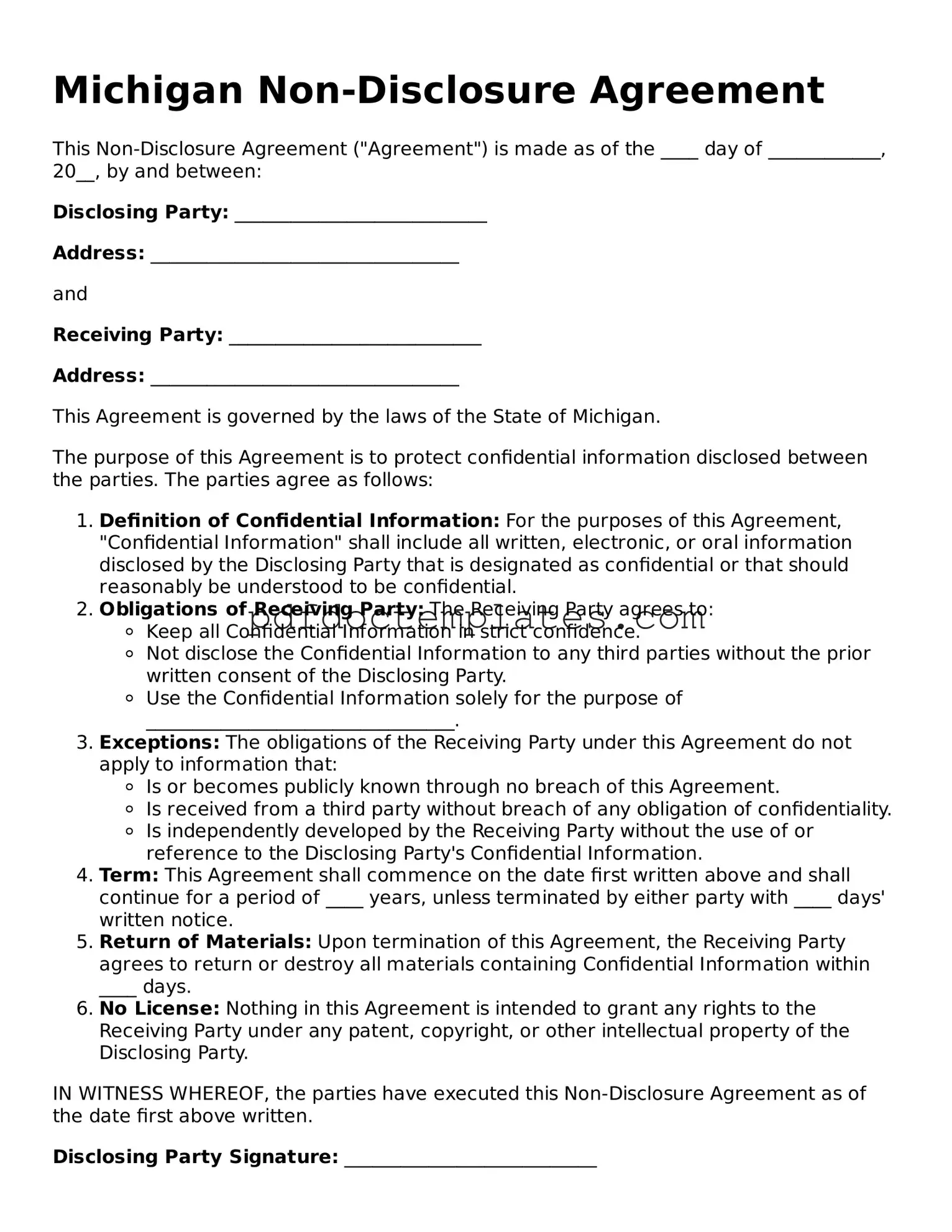Michigan Non-Disclosure Agreement
This Non-Disclosure Agreement ("Agreement") is made as of the ____ day of ____________, 20__, by and between:
Disclosing Party: ___________________________
Address: _________________________________
and
Receiving Party: ___________________________
Address: _________________________________
This Agreement is governed by the laws of the State of Michigan.
The purpose of this Agreement is to protect confidential information disclosed between the parties. The parties agree as follows:
-
Definition of Confidential Information: For the purposes of this Agreement, "Confidential Information" shall include all written, electronic, or oral information disclosed by the Disclosing Party that is designated as confidential or that should reasonably be understood to be confidential.
-
Obligations of Receiving Party: The Receiving Party agrees to:
- Keep all Confidential Information in strict confidence.
- Not disclose the Confidential Information to any third parties without the prior written consent of the Disclosing Party.
- Use the Confidential Information solely for the purpose of _________________________________.
-
Exceptions: The obligations of the Receiving Party under this Agreement do not apply to information that:
- Is or becomes publicly known through no breach of this Agreement.
- Is received from a third party without breach of any obligation of confidentiality.
- Is independently developed by the Receiving Party without the use of or reference to the Disclosing Party's Confidential Information.
-
Term: This Agreement shall commence on the date first written above and shall continue for a period of ____ years, unless terminated by either party with ____ days' written notice.
-
Return of Materials: Upon termination of this Agreement, the Receiving Party agrees to return or destroy all materials containing Confidential Information within ____ days.
-
No License: Nothing in this Agreement is intended to grant any rights to the Receiving Party under any patent, copyright, or other intellectual property of the Disclosing Party.
IN WITNESS WHEREOF, the parties have executed this Non-Disclosure Agreement as of the date first above written.
Disclosing Party Signature: ___________________________
Date: _________________________________
Receiving Party Signature: ___________________________
Date: _________________________________
